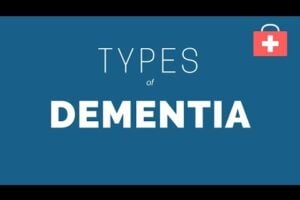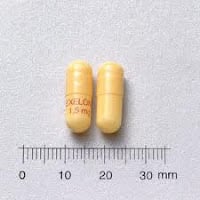The U.S. Food and Drug Administration today cleared for marketing the first in vitro diagnostic device that tests blood to aid in diagnosing Alzheimer’s disease. The Lumipulse G pTau217/ß-Amyloid 1-42 Plasma Ratio is for the early detection of amyloid plaques associated with Alzheimer’s disease in adult patients, aged 55 years and older, exhibiting signs and symptoms of the disease.
“Alzheimer’s disease impacts too many people, more than breast cancer and prostate cancer combined,” said FDA Commissioner Martin A. Makary, M.D., M.P.H. “Knowing that 10% of people aged 65 and older have Alzheimer’s, and that by 2050 that number is expected to double, I am hopeful that new medical products such as this one will help patients.”
Old Tests Costly and Time-Consuming
Alzheimer’s disease, a brain disorder known to slowly destroy memory and thinking skills, and, eventually, the ability to carry out the simplest tasks, is progressive, meaning that the disease gets worse over time. In most people with Alzheimer’s disease, clinical symptoms first appear later in life. Amyloid plaques in a patient’s brain are a hallmark sign of Alzheimer’s disease. While amyloid plaques can occur in other diseases, being able to detect the presence of plaque, along with other evaluations, helps the doctor determine the probable cause of the patient’s symptoms and findings. These plaques can be detected and visualized using amyloid positron emission tomography (PET) brain scans, often years before clinical symptom onset, to aid in diagnosing Alzheimer’s disease. PET scans, however, are a costly and time-consuming option and expose patients to radiation.
Lumipulse is Simple, Less Invasive, Easier
The Lumipulse G pTau217/ß-Amyloid 1-42 Plasma Ratio measures two proteins, pTau217 and β-amyloid 1-42, found in human plasma, a component of blood, and calculates the numerical ratio of the levels of the two proteins. This ratio is correlated to the presence or absence of amyloid plaques in the patient’s brain, reducing the need for a PET scan. Similar FDA-authorized/cleared tests, one from the same company as this new test, are used with cerebrospinal fluid (CSF) samples, which are collected through an invasive lumbar puncture, also called a spinal tap. This new Lumipulse test only requires a simple blood draw, making it less invasive and much easier for patients to access.
“Nearly 7 million Americans are living with Alzheimer’s disease and this number is projected to rise to nearly 13 million,” said Center for Devices and Radiological Health Director Michelle Tarver, M.D., Ph.D. “Today’s clearance is an important step for Alzheimer’s disease diagnosis, making it easier and potentially more accessible for U.S. patients earlier in the disease.”
90% Accuracy
During review of the Lumipulse G pTau217/ß-Amyloid 1-42 Plasma Ratio, the FDA evaluated data from a multi-center clinical study of 499 individual plasma samples from adults who were cognitively impaired. The samples were tested by the Lumipulse G pTau217/ß-Amyloid 1-42 Plasma Ratio and compared with amyloid PET scan or CSF test results.
In this clinical study, 91.7% of individuals with Lumipulse G pTau217/ß-Amyloid 1-42 Plasma Ratio positive results had the presence of amyloid plaques by PET scan or CSF test result, and 97.3 % of individuals with negative results had a negative amyloid PET scan or CSF test result. Less than 20% of the 499 patients tested received an indeterminate Lumipulse G pTau217/β-Amyloid 1-42 Plasma Ratio result.
Reliable Alzheimer’s Test
These findings indicate that the new blood test can reliably predict the presence or absence of amyloid pathology associated with Alzheimer’s disease at the time of the test in patients who are cognitively impaired. The test is intended for patients presenting at a specialized care setting with signs and symptoms of cognitive decline. The results must be interpreted in conjunction with other patient clinical information.
The risks associated with the Lumipulse G pTau217/ß-Amyloid 1-42 Plasma Ratio are mainly the possibility of false positive and false negative test results.
The Problem of False Negatives
False positive results, in conjunction with other clinical information, could lead to an inappropriate diagnosis of, and unnecessary treatment for, Alzheimer’s disease. This could lead to psychological distress, delay in receiving a correct diagnosis as well as expense and the risk for side effects from unnecessary treatment.
False negative results could result in additional unnecessary diagnostic tests and potential delay in effective treatment. Importantly, the Lumipulse G pTau217/ß-Amyloid 1-42 Plasma Ratio is not intended as a screening or stand-alone diagnostic test and other clinical evaluations or additional tests should be used for determining treatment options.
FDA Breakthrough Device Designation for Lumipulse
The FDA reviewed the Lumipulse G pTau217/ß-Amyloid 1-42 Plasma Ratio through the 510(k) premarket notification pathway. A 510(k) notification is a premarket submission made to the FDA to demonstrate that a new device is substantially equivalent to a legally marketed predicate device. The FDA found that the Lumipulse G pTau217/ß-Amyloid 1-42 Plasma Ratio is substantially equivalent to the Lumipulse G β-amyloid Ratio (1-42/1-40), which is the previously authorized test that uses CSF samples.
The Lumipulse G pTau217/ß-Amyloid 1-42 Plasma Ratio was granted Breakthrough Device designation, a process designed to expedite the development and review of devices that provide for more effective treatment or diagnosis of life-threatening or irreversibly debilitating diseases or conditions.
The FDA issued clearance of the Lumipulse G pTau217/ß-Amyloid 1-42 Plasma Ratio to Fujirebio Diagnostics, Inc.











